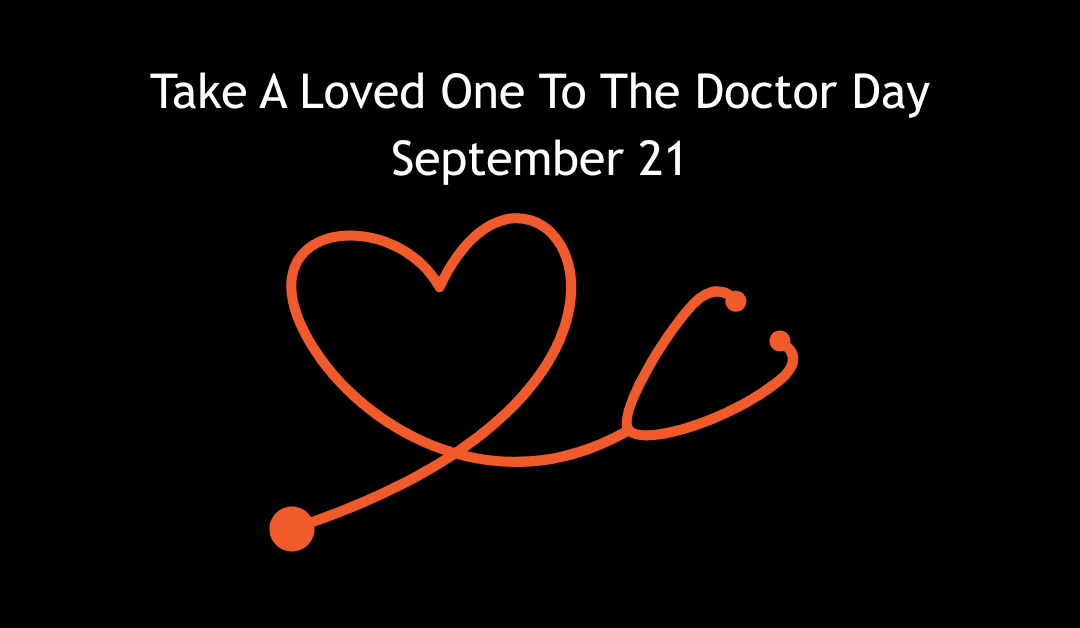
by Bag It Team | Sep 5, 2025 | Educational Articles
 September 21 marks Take a Loved One to the Doctor Day—a national reminder that good health isn’t just a personal responsibility; it’s an important way we can support each other.
September 21 marks Take a Loved One to the Doctor Day—a national reminder that good health isn’t just a personal responsibility; it’s an important way we can support each other.
Whether it’s a parent, spouse, sibling, neighbor or friend, many people put off important medical appointments for reasons ranging from busy schedules to fear of bad news. But preventive care and regular checkups are essential for catching health issues early, managing ongoing conditions, and maintaining overall well-being.
Why This Day Matters
- Early Detection Saves Lives–Many serious health conditions, like cancer, diabetes, and heart disease, have better outcomes when detected early. More about early detection.
- Breaking Down Barriers–Some loved ones may face language, transportation, or cultural barriers to accessing healthcare. Your presence can help bridge those gaps.
- Emotional Support Counts–Going to a doctor’s appointment can feel intimidating. Having someone by your side can ease anxiety and encourage open conversations with healthcare providers.
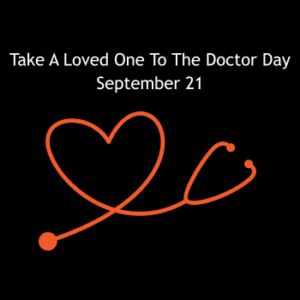 How You Can Participate
How You Can Participate
- Make an Appointment Together–Schedule a checkup for yourself and your loved one on or around September 21.
- Offer a Ride or Company–Even if you’re not the patient, being there for support can make a big difference.
- Help with Questions–Encourage your loved one to write down concerns or symptoms ahead of time so they get the answers they need.
- Celebrate the Step – After the appointment, enjoy a meal or activity together to mark the positive choice.
The Bottom Line
Good health is a gift we can help each other protect. This September 21 (or any day of the year), take the opportunity to show you care—by making sure someone you love gets the care they need. Sometimes, the best way to say “I love you” is with a ride to the doctor.

by Bag It Team | May 30, 2025 | Educational Articles
June marks Men’s Health Month, a time to raise awareness about preventable health problems and encourage early detection and treatment of disease among men and boys. At Bag It, we recognize how important it is to empower men with the tools and information they need—especially when facing a cancer diagnosis.
Cancer & Men: Know the Risks
 Men are more likely than women to be diagnosed with cancer and have a higher mortality rate. The most common cancers affecting men in the U.S. are:
Men are more likely than women to be diagnosed with cancer and have a higher mortality rate. The most common cancers affecting men in the U.S. are:
- Prostate cancer
- Lung cancer
- Colorectal cancer
- Bladder cancer
- Melanoma
Early detection is key. Men often delay routine checkups or ignore early symptoms. Regular screenings can catch issues before they become serious.
Tips for Taking Charge of Your Health
- Schedule annual checkups – Even if you feel fine, regular visits can help detect problems early.
- Know your family history – Some cancers run in families; talk with your doctor about any history of cancer.
- Get screened – Discuss appropriate cancer screenings with your provider (especially for prostate, colorectal, and skin cancer).
- Live healthy – Eat well, stay active, limit alcohol, don’t smoke, and protect your skin from the sun.
- Talk about it – Encourage the men in your life to prioritize their health, too.
How Bag It Cancer Can Help
If you or someone you know has been diagnosed with cancer, our Bag It Bag provides reliable, easy-to-understand materials to help patients feel informed, empowered, and organized. Men may not always ask for help—but they deserve support, too.
Let’s break the silence around men’s health and encourage the men in our lives to take action today.

Resources
General Men’s Health & Preventive Care
- Men’s Health Guidelines for Screening
- Men’s Health Month (Men’s Health Network) – Information, health facts, and advocacy resources dedicated to men’s health.
- CDC – Men’s Health – Covers key health risks, preventive steps, and tips for staying healthy.
Support for Men Facing Cancer
- Bag It – Get a Bag – Free resources to help patients feel informed, empowered, and organized.
- ZERO – The End of Prostate Cancer – Support, education, and advocacy specifically for those impacted by prostate cancer.
- COLONTOWN – A patient-led community for colorectal cancer
- GO2 for Lung Cancer – Education, screening & support for lung cancer
- CancerCare – Support for Men – Support groups, counseling, and educational workshops for men affected by cancer.
- Cancer Support Community – For Men – Emotional and practical support specifically geared toward men
Bag It Bags for Specific Cancers
- Prostate Cancer – Bag It and ZERO Prostate Cancer have partnered to develop 2 Bags of essential resources for patients and caregivers impacted by Advanced-Stage and Early-Stage Prostate Cancers.
- Colorectal Cancer –Bag It and Colontown have partnered to develop this Bag of essential resources for patients and caregivers impacted by colorectal cancer (CRC).
- Lung Cancer – Bag It and GO2 for Lung Cancer have partnered to develop this Bag of essential resources for patients and caregivers impacted by Lung Cancer.
Explore other Bag It Cancer-specific Bags.
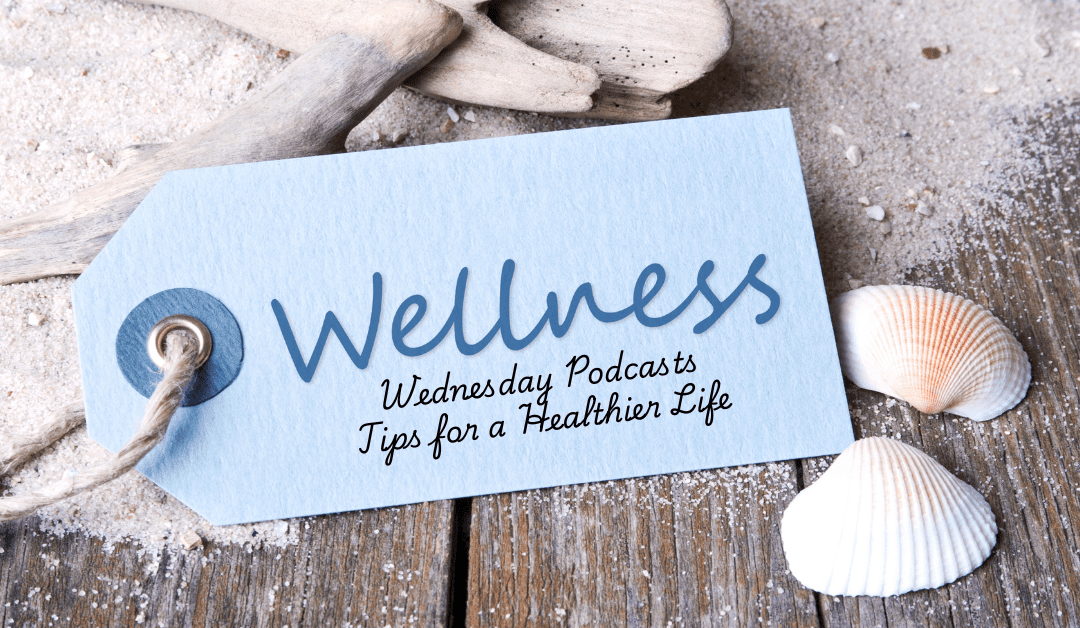
by Bag It Team | Dec 18, 2024 | Events
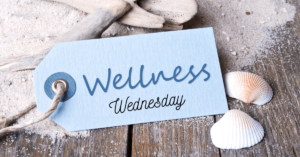 Looking for tips on healthy living and overall wellness?
Looking for tips on healthy living and overall wellness?
Watch Bag It Cancer’s recordings of our Wellness Wednesdays Podcasts on You Tube On Demand.
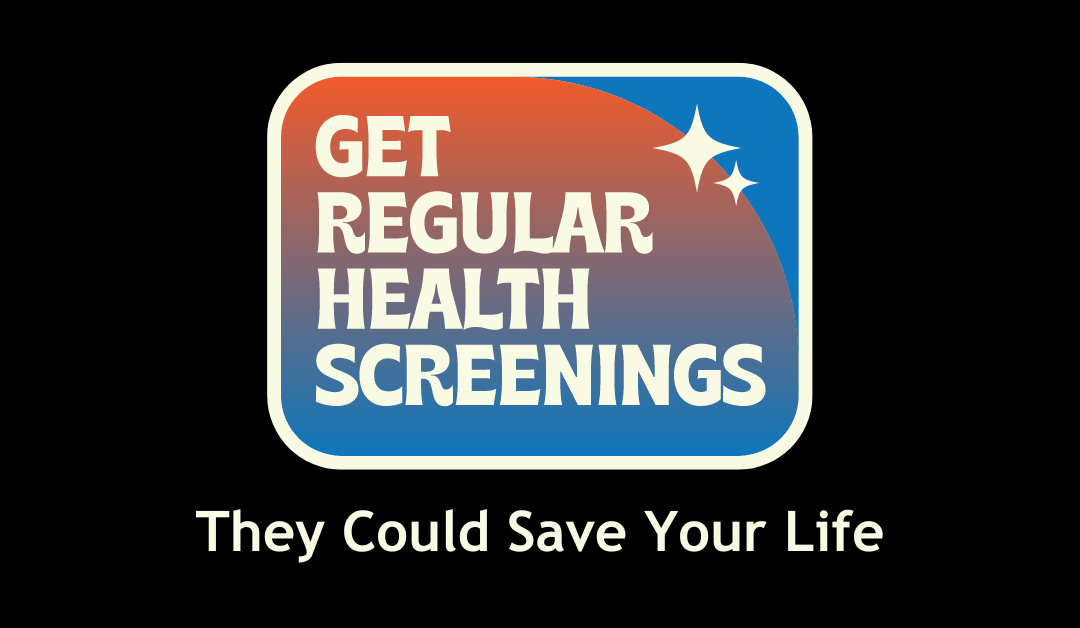
by Bag It Team | Feb 10, 2024 | Educational Articles
Many of us know that making healthy lifestyle choices and getting recommended vaccines can help lower the risk or EVEN prevent some kinds of cancer.
Cancer screenings, which are also cancer prevention strategies, check your body for cancer, even if you have no signs or symptoms. There are different kinds of screenings including:
- A physical exam and personal history
- Lab tests
- Imaging tests
- Genetic tests (these tests look for changes in the genes that may indicate that a person has or is at risk of having a particular disease or condition).

Routine screening tests can help to find breast, cervical, colorectal (colon), and other cancers early, when they may be easier to treat or cure. Many expert organizations provide guidelines for different screenings, but it’s important to talk with your doctor about your personal situation. There are benefits and risks for most screenings, and certain tests may be recommended only for people who are considered high risk for a particular cancer. Together you and your healthcare provider can decide which screenings are appropriate for you.
Remember! When your doctor recommends a screening test for you, it does not necessarily mean they believe you have cancer. Screening tests are used in people with average risk and no symptoms of cancer. Usually these tests, if abnormal, require additional testing to definitively diagnose cancer. If you have symptoms or increased risk based on your personal or family history, you may need to start screening at an earlier age than is typically recommended or may need specialized testing.
Questions to ask your doctor about cancer screenings
- Are any cancer screening tests recommended for me? Which ones?
- Can we talk about the test’s potential risks compared to its benefits?
- When should I start getting cancer screenings? And how often?
- What is the purpose of the test?
- What happens during the test?
- How long does it take to get test results?
- What happens if the results are not normal?
Screening & Prevention Resources
Centers for Disease Prevention & Control, How to Prevent Cancer or Find It Early: Screening
National Cancer Institute, Cancer Screening
Prevent Cancer Foundation, Cancer Screenings and Prevention
American Cancer Society, hundreds of articles on screening and prevention

by Bag It Team | Aug 4, 2023 | Educational Articles
You may worry that having cancer could mean your children will get cancer too. Cancer itself is not passed down (inherited) from parents to children. But a genetic change (mutation) that increases the risk (possibility) of cancer can be passed down if it is present in a parent’s egg or sperm cells. While most cancer is due to random chance or environmental risk factors, up to 10% of all cancers may be caused by inherited genetic changes.
If a person inherits a genetic change from a parent, it does not mean they will definitely get cancer, but the risk (chances) is higher. It also means that their parents,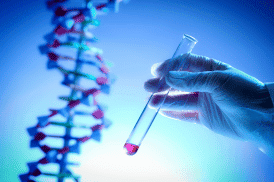 children, and brothers and sisters have a 50% chance of having the same genetic change and a higher risk of getting cancer. Their blood relatives on that side of the family (mother’s side or father’s side) like aunts, uncles and cousins may also have the same genetic change. Genetic testing for hereditary cancer can help a family to learn which, if any, relatives have a higher chance of getting cancer. It can also bring relief when there is no inherited cancer in the family.
children, and brothers and sisters have a 50% chance of having the same genetic change and a higher risk of getting cancer. Their blood relatives on that side of the family (mother’s side or father’s side) like aunts, uncles and cousins may also have the same genetic change. Genetic testing for hereditary cancer can help a family to learn which, if any, relatives have a higher chance of getting cancer. It can also bring relief when there is no inherited cancer in the family.
Even when there is no gene mutation found in a family, sometimes cancer is more common than expected. This is called familial cancer, and happens in up to 20% of all cancers. It is not known why familial cancers happen. Some possible reasons are unknown genetic risk factors not yet included on genetic testing or lifestyle or environmental factors shared by multiple family members.
If you have been diagnosed with cancer or have a family history of cancer, genetic testing may be useful to find out if hereditary cancer is in the family. Genetic testing can give your family members useful knowledge about their health so they can take steps to lower their risk of getting cancer through lifestyle changes, health screenings, and other medical care recommended by their doctor. Ask your doctor if genetic testing is appropriate for your family’s situation.
Genetic Testing
Genetic testing does not prevent or treat cancer. It is a laboratory test that looks for changes (mutations) in a person’s genes that could help:
- Show if they have a higher risk for certain cancers.
- Learn if this increased risk could be passed to children or other family members.
- Change medical care, including knowing better about when to screen for cancer, and how frequently.
Genetic testing does not say if someone has cancer, or that they are guaranteed to have cancer. But it can tell you if you have a higher risk than most people.
Testing is usually done with a small sample of blood, but it can sometimes be done with saliva, cells from inside the cheek, or skin cells. It will usually take several weeks to get the results.
Not everyone needs to get genetic testing. Ask your doctor if this type of testing could benefit you and your care.
Making Decisions About Genetic Testing
To decide if genetic testing is recommended for you, your doctor will have a conversation with you to understand your risk and your family’s history with cancer. They will ask you for important details such as which blood relatives were diagnosed with cancer, their age at diagnosis, and what kinds of cancer they had. Some people feel uncomfortable discussing their family members’ health with others, but keep in mind that your healthcare team wants to help and honor you and your family.
 Based on the family health information you explain to your doctor, a genetic counselor can be very helpful. A genetic counselor is a healthcare professional with specialized training in genetics and counseling to support patients wanting more information about how inherited conditions might affect them or their families. Genetic counselors also explain the meaning of genetic test results in the context of a patient’s family history, and help patients and their families understand this information. They will describe the genetic testing in detail, including the pros and cons of testing, and exploring psychosocial implications of genetic testing before you make this personal decision. If testing is done, they can explain what the results mean for you and for your family.
Based on the family health information you explain to your doctor, a genetic counselor can be very helpful. A genetic counselor is a healthcare professional with specialized training in genetics and counseling to support patients wanting more information about how inherited conditions might affect them or their families. Genetic counselors also explain the meaning of genetic test results in the context of a patient’s family history, and help patients and their families understand this information. They will describe the genetic testing in detail, including the pros and cons of testing, and exploring psychosocial implications of genetic testing before you make this personal decision. If testing is done, they can explain what the results mean for you and for your family.
Cancer can be very overwhelming and knowing that there is a chance that it runs in your family can be difficult. To begin with, you did not cause your cancer, and getting cancer is not your fault or anyone else’s fault. It is important to take it one step at a time and remember that there are professionals who can help you and your family with your concerns.
If you are tested, keep a copy of your report to find out what tests were given and what the results were. Keep this as part of your permanent health record.
Additional Resources
Find genetic counselors | https://findageneticcounselor.nsgc.org/
Learn which cancers have genetic tests | https://www.cancer.net/navigating-cancer-care/cancer-basics/genetics/genetic-testing-cancer-risk
Frequently asked questions about genetic testing | https://www.cancer.gov/about-cancer/causes-prevention/genetics/genetic-testing-fact-sheet
How to get genetic testing | https://www.facingourrisk.org/info/hereditary-cancer-and-genetic-testing/how-to-get-testing/where-to-get-testing

 September 21 marks Take a Loved One to the Doctor Day—a national reminder that good health isn’t just a personal responsibility; it’s an important way we can support each other.
September 21 marks Take a Loved One to the Doctor Day—a national reminder that good health isn’t just a personal responsibility; it’s an important way we can support each other. How You Can Participate
How You Can Participate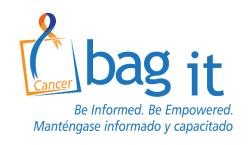

 Men are more likely than women to be diagnosed with cancer and have a higher mortality rate. The most common cancers affecting men in the U.S. are:
Men are more likely than women to be diagnosed with cancer and have a higher mortality rate. The most common cancers affecting men in the U.S. are:

 Looking for tips on healthy living and overall wellness?
Looking for tips on healthy living and overall wellness?


 children, and brothers and sisters have a 50% chance of having the same genetic change and a higher risk of getting cancer. Their blood relatives on that side of the family (mother’s side or father’s side) like aunts, uncles and cousins may also have the same genetic change. Genetic testing for hereditary cancer can help a family to learn which, if any, relatives have a higher chance of getting cancer. It can also bring relief when there is no inherited cancer in the family.
children, and brothers and sisters have a 50% chance of having the same genetic change and a higher risk of getting cancer. Their blood relatives on that side of the family (mother’s side or father’s side) like aunts, uncles and cousins may also have the same genetic change. Genetic testing for hereditary cancer can help a family to learn which, if any, relatives have a higher chance of getting cancer. It can also bring relief when there is no inherited cancer in the family. Based on the family health information you explain to your doctor, a genetic counselor can be very helpful. A genetic counselor is a healthcare professional with specialized training in genetics and counseling to support patients wanting more information about how inherited conditions might affect them or their families. Genetic counselors also explain the meaning of genetic test results in the context of a patient’s family history, and help patients and their families understand this information. They will describe the genetic testing in detail, including the pros and cons of testing, and exploring psychosocial implications of genetic testing before you make this personal decision. If testing is done, they can explain what the results mean for you and for your family.
Based on the family health information you explain to your doctor, a genetic counselor can be very helpful. A genetic counselor is a healthcare professional with specialized training in genetics and counseling to support patients wanting more information about how inherited conditions might affect them or their families. Genetic counselors also explain the meaning of genetic test results in the context of a patient’s family history, and help patients and their families understand this information. They will describe the genetic testing in detail, including the pros and cons of testing, and exploring psychosocial implications of genetic testing before you make this personal decision. If testing is done, they can explain what the results mean for you and for your family.
Recent Comments